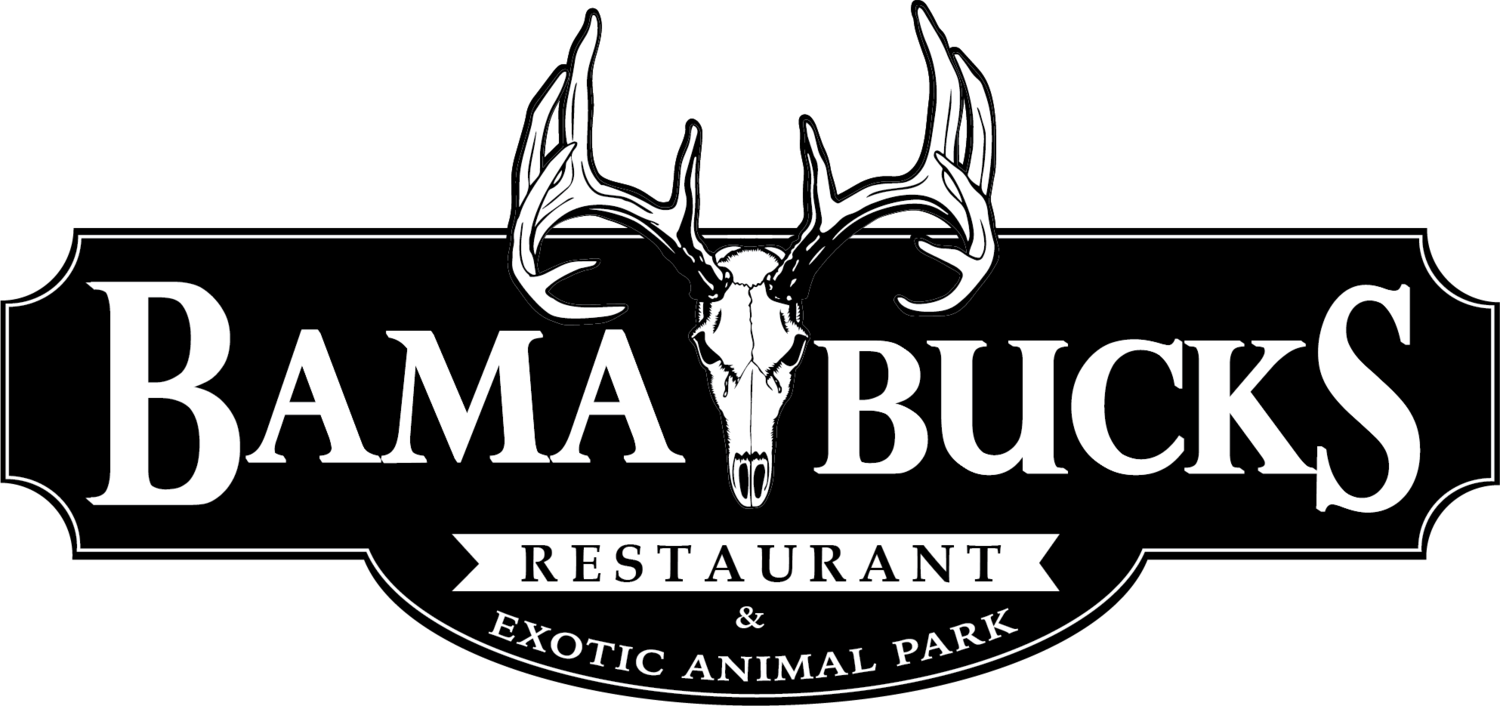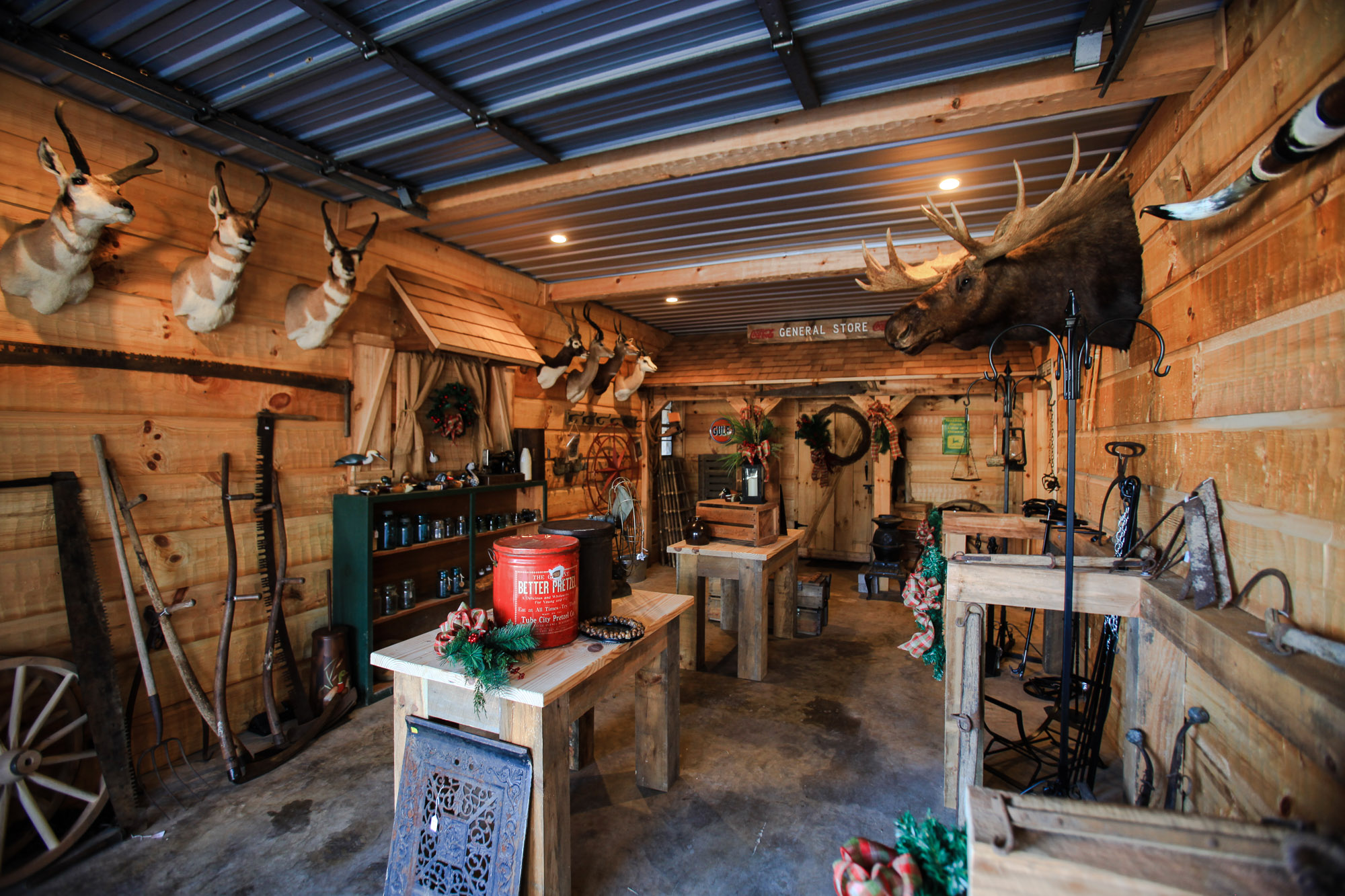Exotic Animal Park
When it comes to the wild, Bama Bucks has it covered and is excited to share our constantly growing knowledge with any of our visitors. Our staff member Preston, along with his family, care for each of the uniquely exotic animals such as Black Bears, Ostrich, Camel, Bison, Emu, upon multiple other creatures cohabitating within our park.
In addition to greeting the animals, the park features a large pavilion with a fireplace and seating to accommodate special gatherings. Our family at Bama Bucks is here to host any private parties for an intimate and educational introduction with our beloved animals. With each visit back to our park, you will find that there will always be more to learn. Contact us for rental and reservation inquiries.
Please, do not leave our park until you can say you have ridden a bull for 0.8 seconds or maybe even a camel if his pace would be more accommodating. We love, care, and protect our animals as if they were our own family. Therefore, animal rides are open to the public so long as that animal's temperament is cooperative.
Schedule a private tour for small or large parties Monday-Wednesday
Camel & Bull Rides - $5.00
General Store
Your experience will always be an educationally wild one with us at Bama Bucks, even in our general store. Take a jar of honey home with you, or any of our unique gifts: raw materials, textiles, local products, metalwork artistry, and Bama Bucks souvenirs. The fun is sure to linger for the children as observations of fish swimming, honey bees at work in their hive, sounds of a waterfall, and a fresh scoop of ice cream are all offered at our general store.
We encourage you to ask any questions you may have about the animals to any of our family of staff members, as we assure you they will be happy to answer.
Antique Barn
While you’re at the Exotic Animal Park, take time to visit our antique barn, there you’ll fine old south farm relics, decoys, vintage tins, and antique jars and glass.
Jack Daniel’s Barrel Room
Just a few steps from the antique barn we have a large collections of Jack Daniel Barrels available for purchase.
Antler Room
Before touring the exotic animal park, take the time to visit the antler room, there you’ll find a variety of antlers and information about the animals in our park.
Exotic Animals In Our Game Park
Black Bears
Black bears are extremely adaptable and show a great variation in habitat types, though they are primarily found in forested areas with thick ground vegetation and an abundance of fruits, nuts, and vegetation. In the northern areas, they can be found in the tundra, and they will sometimes forage in fields or meadows.
Ostrich
Ostriches are large, flightless birds that have long legs and a long neck that protrudes from a round body. Males have bold black-and-white coloring that they use to attract females. The ostrich is the only bird that has two toes on each foot.
Ring-tailed Lemur
The ring-tailed lemur is a large strepsirrhine primate and the most recognized lemur due to its long, black and white ringed tail. It belongs to Lemuridae, one of five lemur families, and is the only member of the Lemur genus. Like all lemurs it is endemic to the island of Madagascar.
Kangaroo
The kangaroo is a marsupial from the family Macropodidae. In common use the term is used to describe the largest species from this family, especially those of the genus Macropus: the red kangaroo, antilopine kangaroo, eastern grey kangaroo, and western grey kangaroo. Kangaroos are indigenous to Australia
Camel
A camel is an even-toed ungulate in the genus Camelus that bears distinctive fatty deposits known as "humps" on its back. Camels have long been domesticated and, as livestock, they provide food and textiles.
Fallow Deer
The Fallow Deer is a type of deer from the family Cervidae. The animal originally lived in Eurasia, but people have brought it to other parts of the world like Australia.
The male is called a buck, the female is a doe, and the young a fawn. They live for about 12–16 years. All of the Fallow Deer have white spots on their backs, and black tips at the ends of their tails. Only bucks have antlers, which are wide and shaped like a shovel.
They are grazing animals. They like to live in an area that is mixed woodland and open grassland. They try to stay together in groups of up to 150.
Rocky Mountain Elk
The Rocky Mountain elk is a subspecies of elk found in the Rocky Mountains and adjacent ranges of Western North America. The winter ranges are most common in open forests and floodplain marshes in the lower elevations. In the summer it migrates to the subalpine forests and alpine basins.
Bison
Millions of bison once thundered across North America. These massive animals, characterized by their long, shaggy brown coats, have poor eyesight but acute hearing and an excellent sense of smell.
Historically, the American bison played an essential role in shaping the ecology of the Great Plains. They graze heavily on native grasses and disturb the soil with their hooves, allowing many plant and animal species to flourish. Prairie dogs prefer areas grazed by bison where the grass is short so they can keep a lookout for hungry predators, and wolves once relied on bison herds as a major food source. Today, wild bison are making a small comeback in a few scattered places, but they need more room to roam.
Miniature Mediterranean Donkey
Miniature Mediterranean Donkeys are a separate breed of donkey originating from the islands of Sardinia and Sicily.
Now almost extinct in their native land, these diminutive little animals are a popular pet in the USA, especially in the southern states.
The most common color is grey dun with chocolate highlights. Other colors include brown, black, slate grey, sorrel, spotted, piebald, skewbald and cream.
Eastern Turkey
The wild turkey is an upland ground bird native to North America and is the heaviest member of the diverse Galliformes. It is the same species as the domestic turkey, which was originally derived from a southern Mexican subspecies of wild turkey (not the related ocellated turkey). Although native to North America, the turkey probably got its name from the domesticated variety being imported to Britain in ships coming from the Levant via Spain. The British at the time therefore associated the wild turkey with the country Turkey and the name prevails.


















